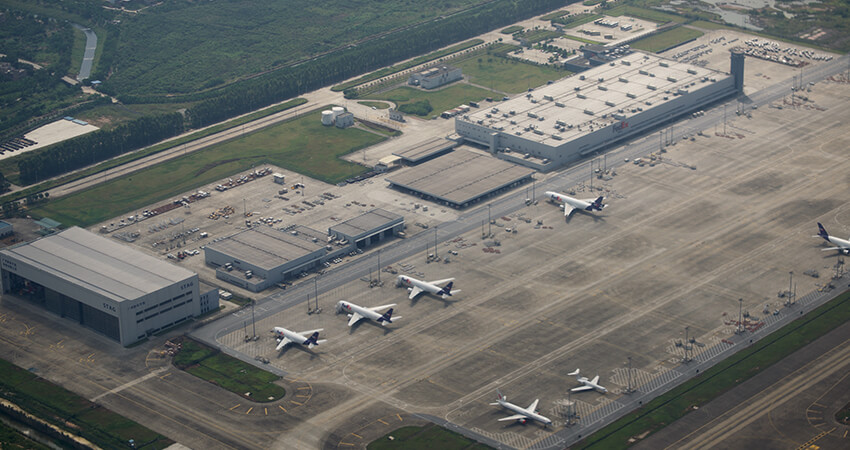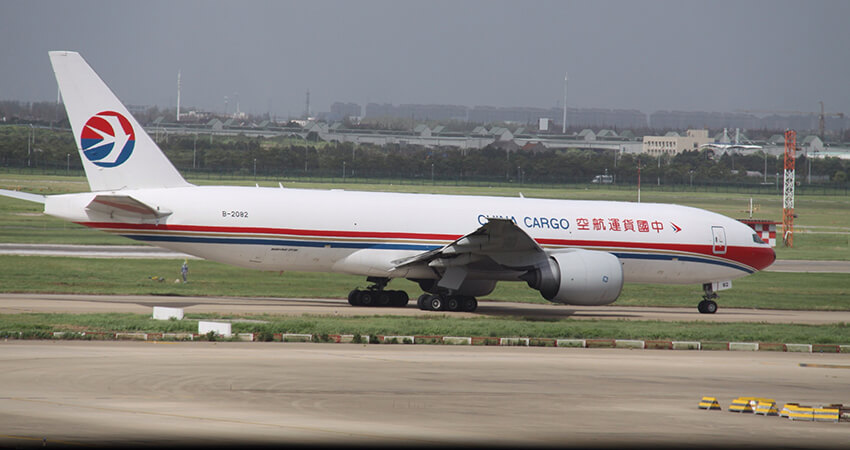If any country has transformed the global economy in recent decades, it’s China. Its demographic power has enabled it to shift from an agriculture-based nation to one with significant industrial and technological capabilities. As a global economic powerhouse where trade is key, its network of ports and airports is central to both national and international logistical flows.
The size of its economy makes it challenging to compare the operations of its cargo airports with other locations. Additionally, the distance between China and the United States and Europe makes air cargo transportation crucial, given the advantages it offers
According to statistics from the Airports Council International (ACI), China and the United States have seven of the top ten airports managing the most cargo in the world. If Taiwan, claimed by China despite having an independent government, is included, only Incheon (South Korea) and Narita (Japan) fall outside the competition between the two powers.
Hong Kong, the world’s busiest cargo airport
China can boast a title it has held since 2010 (with a break in 2020): Hong Kong International Airport (HKG) is the world’s leading cargo transport hub. In 2017, 2018, and 2021, this terminal surpassed 5 million tons of cargo, nearly double the combined transport of airports across the entire African continent.
The airport is central for China and especially for Hong Kong, which operates under a special political and administrative regime within the country. Established in 1998, it is located on an artificial island and its construction was a massive engineering feat. It required significant political agreements, coinciding with the transfer of sovereignty from British to Chinese rule.
Directly, the airport generates 65,000 jobs. Around 100 airlines operate there, connecting to approximately 180 cities worldwide and transporting 68 million passengers. As a logistics hub, it is the headquarters for cargo airlines such as UPS Airlines and AHK Air Hong Kong Limited, as well as a key logistics center for DHL, among many others.
The airport also boasts exclusive cargo terminals and advanced systems to manage them, along with extensive warehouses to handle the massive volume of material circulating daily.
Shanghai, the mainland giant
Shanghai Pudong International Airport (PVG) is the largest airport in mainland China and the fourth busiest in the world. In 2021 and 2022, it transported between 3 and 4 million tons, slightly less than its competitors but maintaining a formidable traffic volume.
This airport, with five runways, experienced exponential growth in the last two decades. In 2000, according to official statistics, it handled just over 250,000 tons. By 2003, it had already surpassed one million, and by 2008, it had exceeded 2 million.
Shanghai still has room to grow. The airport has the capacity to handle six million tons per year, almost double its current volume. This reflects some of China’s growth objectives for the coming years.
In the top 20: Guangzhou and Shenzhen

Guangzhou Airport (CAN) ranks 16th among the world’s busiest cargo airports. With two million tons in 2021, according to the ACI report, it consistently holds a prominent position in the rankings. It even has a terminal specifically dedicated to the FedEx Asia-Pacific hub. Located in Canton, one of China’s thriving cities.
On the other hand, Shenzhen (SZX) completes the top 20 of airports with the most traffic. Bordering Hong Kong and the special territories administered from the island, it complements the service in the Canton area, one of the country’s most densely populated and rapidly growing regions. With 1.5 million tons annually, cargo departs from there to dozens of cities in Asia, Africa, Europe, and the United States.
The case of Beijing
China’s capital also boasts a major airport (PEK), including an extensive cargo terminal. In 2012, it reached 13th place in the ACI ranking, although over the years, its impact has diminished.
In 2017 and 2018, it managed 2 million tons of cargo. However, in the subsequent years, it gradually decreased in cargo volume. In 2022, according to available statistics, it fell below one million tons. While this would be a significant success for any country, it represents less than half of its record just five years earlier.










